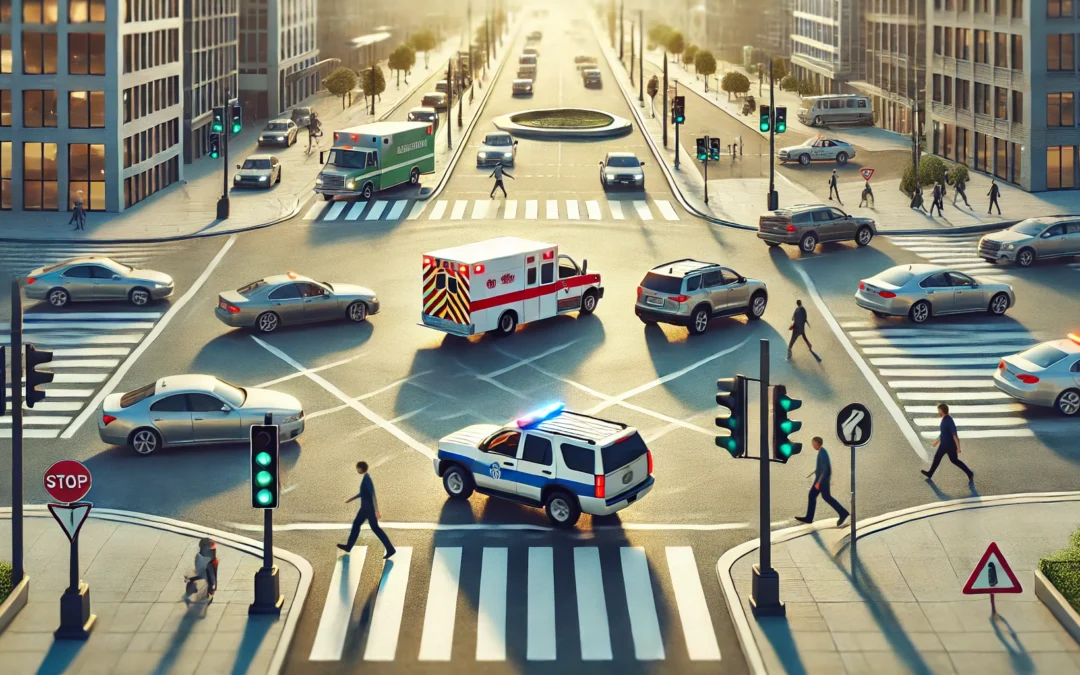Right-of-Way Rules: Ensuring Safety and Order on the Road
Understanding right-of-way rules is crucial for maintaining safe driving practices and avoiding confusion or accidents at intersections. These rules define who gets to proceed first in various traffic situations, helping to prevent collisions and misunderstandings between drivers, cyclists, and pedestrians. Here’s an overview of the key right-of-way guidelines.
Intersections and Right-of-Way
At intersections, different factors determine who has the right-of-way. Whether the intersection is controlled by traffic lights, stop signs, or completely uncontrolled, the rules help to establish the proper flow of traffic.
-
Uncontrolled Intersections: If there are no traffic signals or stop signs, the vehicle or pedestrian who arrives first has the right-of-way. If two vehicles arrive at the same time, the vehicle on the right goes first.
-
T-Intersections: At T-intersections, vehicles on the through road have the right-of-way. If you are on the terminating road, you must yield.
-
Stop Signs at All Directions: At an intersection with stop signs at all corners, the rule is to stop completely, then proceed in the order of arrival. If vehicles arrive at the same time, yield to the driver on the right.
Turning Right and Left
Whether you are turning right or left, you must yield to pedestrians and other vehicles under certain circumstances:
-
Turning Left: When turning left, yield to all oncoming traffic until it is safe to make the turn. You must also check for pedestrians crossing the road and yield to them.
-
Turning Right: Always check for pedestrians before making a right turn, particularly when crossing a crosswalk. Bicycles and motorcycles are often present, so stay vigilant. If you are turning right at a red light, come to a full stop first, then proceed when it is clear and safe.
Pedestrian Right-of-Way
Pedestrians generally have the right-of-way at crosswalks, both marked and unmarked. As a driver, it’s essential to stop and allow pedestrians to cross safely:
- Crosswalks: Stop for pedestrians in crosswalks, marked or unmarked, even if they are not in your direct path.
- Eye Contact: If a pedestrian makes eye contact, it’s a signal they are ready to cross, and you should yield.
Roundabouts
In roundabouts, traffic moves in one direction around a central island. Vehicles entering the roundabout must yield to those already circulating. Here’s how to navigate a roundabout safely:
- Yield Before Entering: Slow down and yield to all vehicles currently in the roundabout.
- Proceed Counter-Clockwise: Enter the roundabout and continue driving counter-clockwise until you reach your exit.
- Signal Before Exiting: Signal your intention to exit and proceed when safe.
Emergency Vehicles
When an emergency vehicle approaches using its lights and sirens, all drivers must yield the right-of-way:
- Pull Over: Immediately pull over to the right side of the road and stop until the emergency vehicle has passed.
- Intersections: If you are in the middle of an intersection when an emergency vehicle approaches, continue through the intersection and pull over as soon as possible.
Conclusion
Following right-of-way rules is essential for safe and efficient driving. Whether at intersections, roundabouts, or when encountering pedestrians, these rules help prevent accidents and ensure that traffic flows smoothly. Always be prepared to yield when necessary, and never assume other drivers will follow the rules, as safety should always be the priority.






Recent Comments